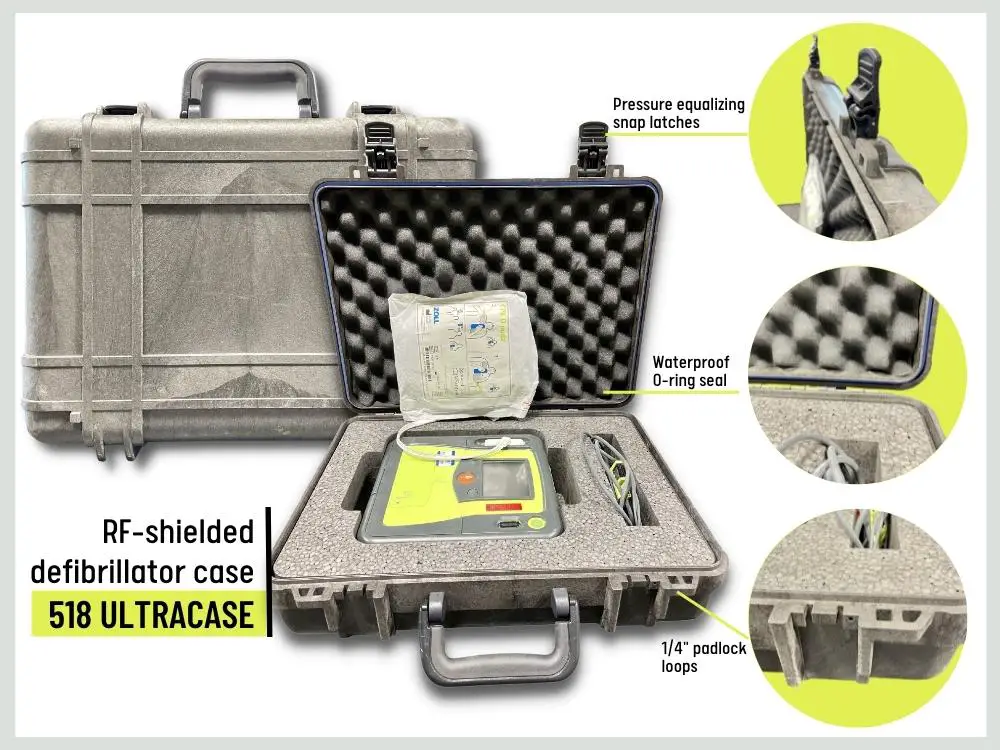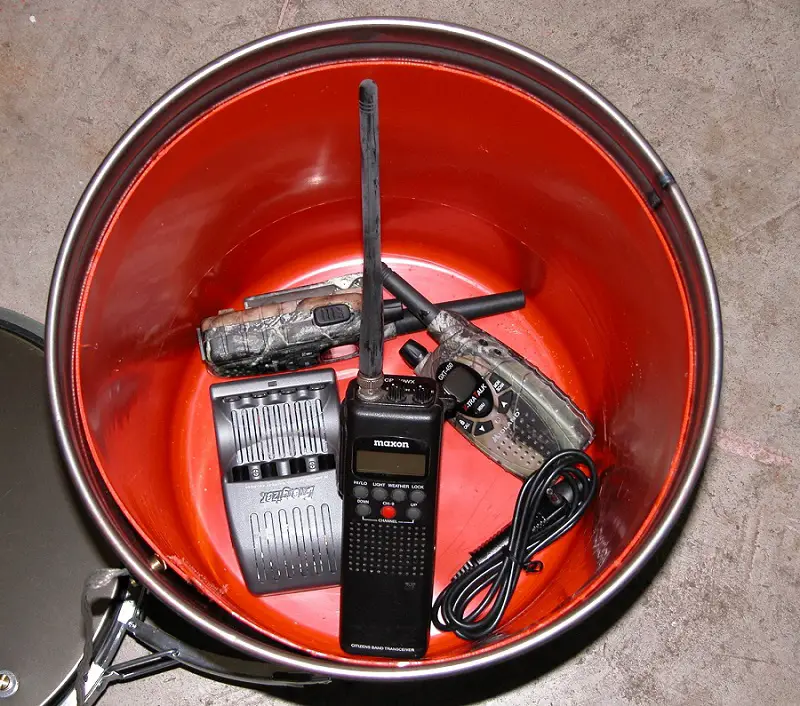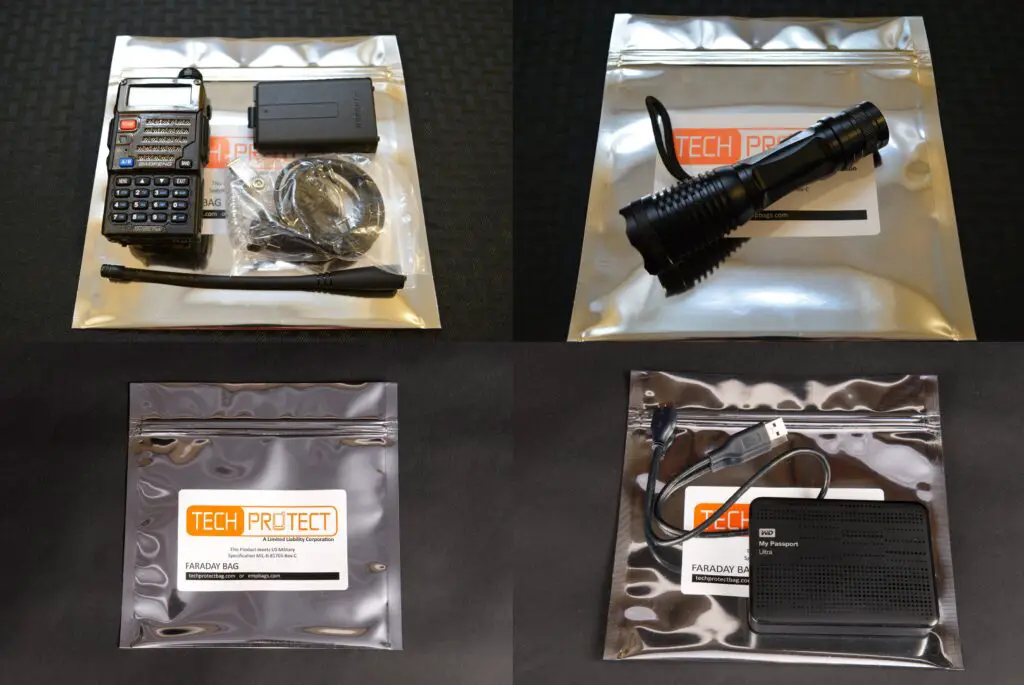In today’s digital age, our reliance on electronics is more prevalent than ever. From smartphones to laptops, these devices have become an essential part of our daily lives. However, what if a sudden electromagnetic pulse (EMP) were to disrupt and potentially destroy these electronic devices? In this article, discover effective strategies and precautionary measures to keep your electronics safe from EMPs, ensuring their longevity and functionality in any unforeseen circumstances.

Understanding EMPs
What is an EMP?
An electromagnetic pulse (EMP) is a burst of energy that can cause significant damage to electronic devices and infrastructure. It is typically generated by nuclear explosions, solar storms, or man-made devices. An EMP can disrupt or destroy electronic components, making devices inoperable and potentially causing widespread power outages.
Different types of EMPs
EMP events can occur in two main forms: high-altitude EMPs (HEMPs) and localized EMPs. HEMPs are caused by nuclear detonations in the atmosphere, while localized EMPs are generated by devices specifically designed to emit electromagnetic energy. Both types can have devastating effects on electronics, but HEMPs have the potential to impact a larger area and cause more widespread damage.
Effects of EMPs on electronics
When an EMP occurs, it releases a powerful and fast-moving electromagnetic field that induces electric currents in conductive materials. This sudden surge of energy can overload and damage electronic components, leading to a variety of effects. For example, microchips can be fried, circuitry can be disrupted, and data stored in electronic devices can be corrupted or lost. The severity of the damage depends on the proximity and strength of the EMP, as well as the vulnerability of the affected electronics.
Identifying Vulnerable Electronics
Electronics susceptible to EMPs
Not all electronic devices are equally vulnerable to EMPs. Generally, devices with larger and more complex circuitry are at a higher risk. This includes computers, smartphones, televisions, radios, and various home appliances. Additionally, devices with long wiring or exposed antennas are more susceptible to damage from EMPs, as they act as antennas themselves and can amplify the electromagnetic energy.
Identifying potential targets
To identify potential targets for EMP protection, it is important to consider the significance and reliance on certain devices in your daily life. Start by assessing the electronics you use most frequently and depend on for communication, work, or critical functions. Prioritize protecting these devices to ensure a smoother transition in case of an EMP event. Additionally, consider the geographic location and vulnerability of the infrastructure around you. Power grids, water treatment plants, and transportation systems can also be susceptible to EMPs and may impact your electronic devices indirectly.
Preventive Measures
Creating a Faraday cage
One of the most effective ways to protect electronic devices from EMPs is by creating a Faraday cage. A Faraday cage acts as a conductive shield that blocks out external electromagnetic fields, including those generated by an EMP. You can create a simple Faraday cage using materials such as aluminum foil, metal containers, or conductive fabric. Place your electronics inside the cage, ensuring they are fully enclosed, and seal any openings to prevent leakage of electromagnetic energy.
Shielding electronics with aluminum foil
If building a Faraday cage seems too complex, a more accessible option is to shield individual electronics with aluminum foil. Aluminum is a highly conductive material that can help deflect and dissipate electromagnetic energy. Simply wrap your electronic device tightly and completely with several layers of aluminum foil, ensuring that all sides are covered. This makeshift shielding can provide a certain level of protection against EMPs.
Using EMP bags
Another option for safeguarding electronics is using EMP bags. These specially designed bags have multiple layers of conductive materials that effectively block and absorb electromagnetic energy. By placing your devices inside these bags, you create a protective barrier that reduces the risk of EMP-induced damage. EMP bags are available in various sizes and can accommodate devices such as laptops, cell phones, and small appliances.
Storing electronics in a metal container
If you have a metal container readily available, you can utilize it to store your electronics as a temporary safeguard against EMPs. Metal, especially thicker and more conductive metals like steel, can provide some level of shielding against electromagnetic energy. Ensure that the container is fully sealed to prevent any electromagnetic leakage. This method is particularly useful for long-term storage of electronics in a secure location.
Keeping electronics disconnected
Another simple yet effective preventive measure is to keep your electronics disconnected from power sources and communication networks when not in use. By unplugging devices from electrical outlets and disconnecting them from Wi-Fi or cellular networks, you minimize their exposure to external connections that can potentially transmit EMP-induced energy. This practice reduces the risk of EMP damage and can also extend the lifespan of your devices by avoiding power surges and electrical fluctuations.
Emergency Procedures
Unplugging electronics during an EMP event
In the event of an impending EMP, it is crucial to quickly unplug your electronics from power sources. This includes disconnecting devices from wall outlets, power strips, and any other sources of electrical power. By removing the electronics from the power grid, you minimize the risk of them getting damaged by a surge of electromagnetic energy. It is important to be prepared and have a plan in place to act promptly when necessary.
Disconnecting power sources
Aside from unplugging electronics, it is essential to disconnect power sources from the devices themselves during an EMP event. This means removing batteries, turning off internal power switches, and cutting off any other sources of electricity that could potentially feed energy into the devices. By completely severing the connection between the electronics and any power sources, you add an extra layer of protection against EMP-induced damage.
Taking precautions with sensitive devices
Certain devices, such as medical equipment or critical communication devices, may require additional precautions to ensure their functionality during and after an EMP event. Consult the manufacturer’s guidelines or contact a professional to determine the specific measures needed to safeguard sensitive devices. This may involve using backup power solutions, specialized shielding, or even relocating the devices to more secure locations during potential EMP events.
Minimizing exposure to external connections
To further reduce the risk of EMP damage, minimize the exposure of your electronics to external connections that can act as conduits for electromagnetic energy. Avoid using wired connections, such as Ethernet cables or external antennas, whenever possible. Instead, rely on wireless technologies or utilize devices with built-in antennas that are less susceptible to EMP-induced currents. Additionally, keep your electronics away from windows or other areas that may receive direct EMP energy.

Backup Power Solutions
Investing in uninterruptible power supplies (UPS)
To mitigate the impact of power outages caused by EMPs, investing in uninterruptible power supplies (UPS) is highly recommended. A UPS acts both as a surge protector and a backup power source. It offers temporary power during blackouts, allowing you to safely shut down your electronic devices and protect them from potential EMP-related damage. With a UPS, you can ensure continuous power availability and minimize the risk of data loss or component failures.
Using portable power generators
Another backup power solution that can prove invaluable during EMP events is a portable power generator. These devices provide on-demand electricity in emergency situations and can power multiple appliances simultaneously. By having a portable power generator on hand, you can maintain essential functions and power your electronics even in the absence of grid-supplied electricity. Ensure proper safety precautions and follow manufacturer guidelines when operating a generator.
Consider solar power options
Incorporating solar power into your backup power strategy can offer long-term benefits and independence from the grid. Solar panels harness the sun’s energy and convert it into electricity, which can be stored in batteries for later use. Even during an EMP event, solar-powered systems can continue generating electricity, provided they are properly protected. Transitioning to solar power helps reduce dependency on traditional energy sources and enhances the resilience of your electronics in the face of EMPs.
EMP Shielding Technology
Exploring EMP shielding devices
Various electromagnetic shielding devices are commercially available to provide advanced protection against EMPs. These range from dedicated EMP shielding bags and enclosures to specialized filters and surge protectors. EMP shielding devices are designed to offer a higher level of protection than DIY methods, ensuring the safety and functionality of your electronics. Research and select shielding options based on your specific needs and the level of protection required for your devices.
Surge protectors and power conditioners
Surge protectors and power conditioners are essential components for safeguarding electronics against electrical surges and fluctuations, including those caused by EMPs. Surge protectors monitor the incoming electrical current and divert excess energy to protect connected devices. Power conditioners, on the other hand, regulate and stabilize the voltage supplied to electronics, minimizing the risk of damage from unstable power sources. By incorporating these devices into your setup, you enhance the overall protection against EMPs and other electrical hazards.

Lifestyle Changes
Reducing dependency on electronic devices
While protecting your electronics from EMPs is important, considering lifestyle changes to reduce dependency on electronic devices can be equally beneficial. Identifying areas where you can rely on non-electronic alternatives, such as using physical maps rather than GPS or reading printed books instead of e-books, can enhance your resilience in the face of EMP events. Embracing analog activities and diversifying your skill set can ensure smoother transitions during potential disruptions caused by EMPs.
Having redundant systems in place
Redundancy is key to maintaining functionality in the event of EMP-related damage. Have duplicates or backup systems for critical electronic devices, including communication tools, medical equipment, or important data storage devices. By having redundant systems available, you can quickly switch to a backup device should the primary one become inoperable due to an EMP event. Redundancy provides an additional layer of security and ensures continuity in essential functions.
Building a self-sustainable lifestyle
EMP events can potentially disrupt the availability of crucial resources, such as electricity, water, and transportation. Building a self-sustainable lifestyle can mitigate the impact of such disruptions. Consider incorporating renewable energy systems, such as solar or wind power, to provide independent sources of electricity. Develop a water storage and purification system to ensure access to clean water. Enhance your self-sufficiency through techniques like gardening, food preservation, and developing essential skills for survival. By embracing self-sustainability, you reduce reliance on external infrastructure and increase resilience to EMP events.
Educational Resources
Learning about EMP protection
To better understand EMPs and the various protection methods available, educating yourself about EMP protection is essential. Explore reputable resources, such as books, articles, and online tutorials, that provide in-depth information on EMPs, their effects, and effective protective measures. Learning the science behind EMPs can empower you to make informed decisions regarding the protection of your electronics and overall preparedness for potential EMP events.

Government and Professional Advice
Seeking expert guidance and advice
For comprehensive and personalized advice regarding EMP protection, seek guidance from experts in the field. Specialists in electromagnetics, electrical engineering, or emergency management can assess your specific situation and provide tailored recommendations. They can offer insights into advanced protection techniques, assist with the installation of shielding devices, and guide you through the process of securing your electronics against EMPs. Professional advice ensures that you are taking appropriate measures to safeguard your electronics based on the most up-to-date knowledge and expertise.
Contacting local authorities for recommendations
Local authorities, emergency management agencies, and government organizations may have resources or recommendations for EMP protection specific to your region. Reach out to these entities to inquire about any initiatives, guidelines, or assistance available to the public. They may provide valuable information on local infrastructure vulnerabilities and suggest additional steps to protect your electronics and overall safety during EMP events. Collaboration with local authorities enhances community resilience and preparedness for potential EMP threats.
Regular Maintenance and Testing
Inspecting and maintaining protective measures
Once you have implemented protective measures against EMPs, it is crucial to regularly inspect and maintain them to ensure their effectiveness. Check the integrity of Faraday cages, EMP bags, or any other shielding methods regularly. Look for signs of wear or damage that could compromise the shielding properties. Replace or repair any damaged components promptly. By conducting routine maintenance, you can identify and address any vulnerabilities in your protective measures and ensure optimal protection against EMPs.
Regularly testing EMP protection methods
In addition to maintenance, regular testing of your EMP protection methods is essential to verify their functionality. Conducting tests at predetermined intervals helps ensure that your shielding devices and preventive measures are properly protecting your electronics. Consider using EMP simulators or consulting with professionals to perform comprehensive assessments. Testing provides peace of mind and confidence in the effectiveness of your defense against EMPs.
In conclusion, understanding EMPs and their potential impact on electronics is crucial for safeguarding your devices from damage. By identifying vulnerable electronics, implementing preventive measures, following emergency procedures, utilizing backup power solutions, exploring EMP shielding technology, making lifestyle changes, educating yourself, seeking professional advice, and regularly maintaining and testing your protection methods, you can enhance the resilience of your electronics and mitigate the risks posed by EMP events. Protecting your electronics from EMPs not only ensures their longevity but also contributes to your overall preparedness and resilience in the face of potential disruptions.

